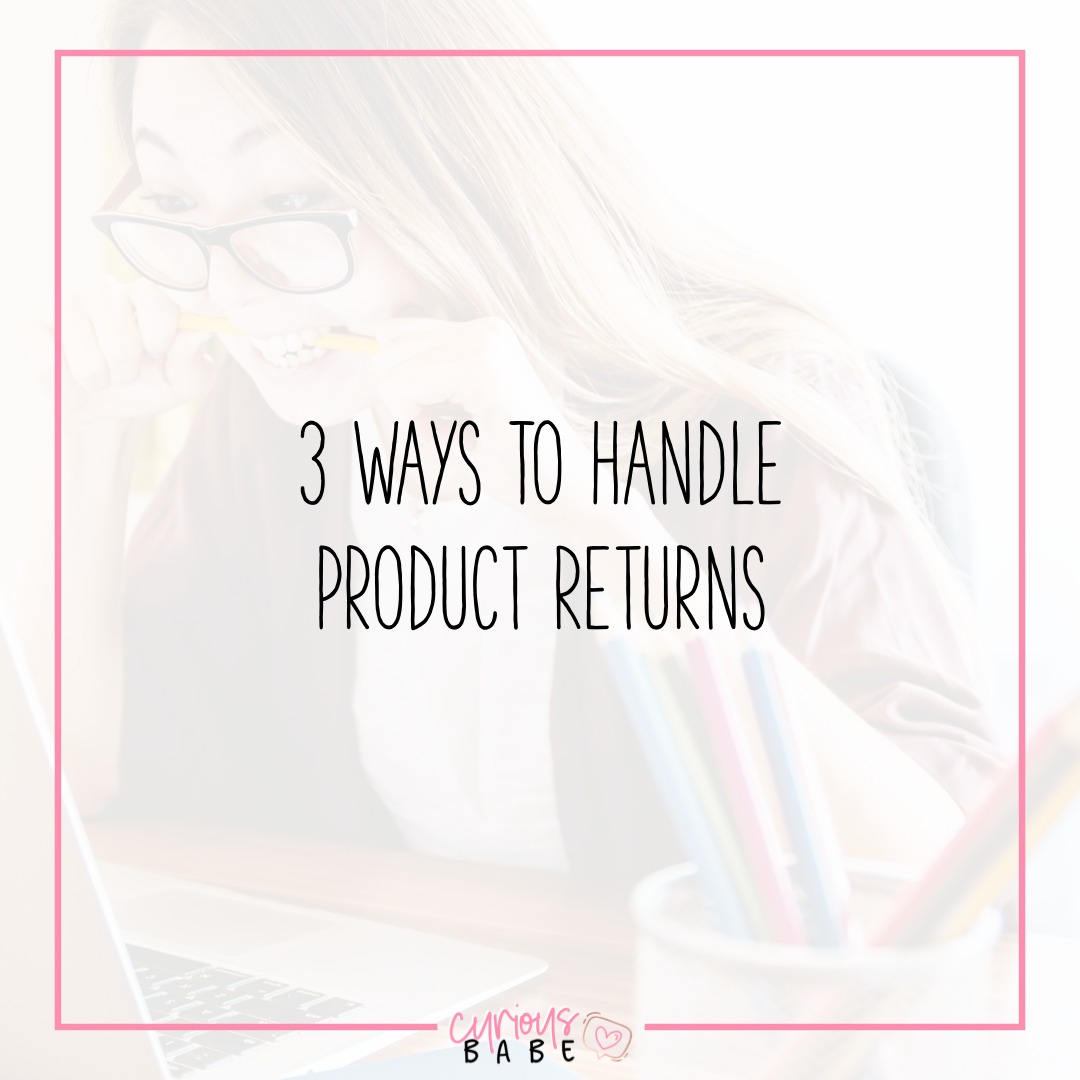3 Ways To Handle Returns
Remember the blog where I woke up 1 day to not 1, not 2 but 4 customer complaints? If you haven't read it, you can give it a read here.
Returns are inevitable and are bound to happen.
So what happens when you get a return? How do you handle returns?No body likes to return stuff after they've shopped for it, not the customers and definitely not the buyers, but we all face them from time to time because we can't please everyone.
Every once in a while, you'll have that one tough customer who would want to return the item or not return item but ask for a partial refund. It's how you handle the situation that would make a big difference in your business.
One of the best ways to handle eBay returns is to understand why your customer wants to return the item. Is it broken? Did it get damaged during transit or was it the wrong item that reached them? Sometimes it can also be buyer's remorse.
Once you know the why, you can handle the how.
Knowing how to handle the returns will help you be prepared when it happens to you and since you are dropshipping, you are going to be the intermediary between your customer and your supplier.
So the first step is - Get a return label from the supplier
Sometimes customers open a return case when they want to return an item, while other times, they would message you to arrange for the return. In both cases, inquire why the customer wants to return the item. Once you have all the details, message your supplier and ask them for return label. You can do so by either going onto their website or contacting the customer support team.Note - You can use the information your customer gave you to inform your supplier about why they want to return the item.
Then, take that return label and send it to your customer
Suppliers usually send you a pre-paid return label where the customer only has to drop off the item to the courier company's drop off location. Some suppliers like Amazon and Walmart, also arrange pick ups. Depending on your supplier and their return policies, you can send out the return label to the customer along with the instructions stated by your supplier. Once you've sent that, it's up to the customer to follow them and post back the item.Make sure you send the buyer their return label within 2-3 business days of them filing for returns. eBay is very strict with their policies and just might pay the buyer on your behalf if you did not take the appropriate actions within the given time frame.
Issue Refund to your customer
cancel_order
√ Return Label Issued√ Customer sends the item back to your supplier√ Supplier sends you the refundNow that all the above steps have been ticked, you can issue a refund to your customer by clicking on issue refund option in your case.What if the buyer did not open a case? Simply go to the order section, the buyer's listing and via the little drop down menu go to cancel order. The page should look like the image below.In the drop down that says, why do you want to cancel this order, select the option that says - The buyer asked you to cancel the order.Then continue and issue refund.It's a simple 3 step process to handle returns. However, there are a few things you should keep in mind when handling returns -
Always follow your supplier's policy when it comes to returning items. If they charge re-stocking fee, you charge re-stocking fees. Else you will end up loosing money from your pocket.
Don't issue a return unless the supplier's issued a return to you. It's a precaution to avoid losses.
If the customer does not send the item back within 5-7 business days of issuing them a return label, you can call eBay and ask them to close the case in your favor. If he never opened the case and this was all via messages, you don't have to worry about it.
Always interact with your buyer via eBay messages. Never interact on personal email ids. This way, eBay has a record of what's going on and can back you up.
Return is an opportunity to re-analyse your product. If you getting multiple complaints for 1 product, talk to supplier, stop selling them or find another alternative. Even if it's a good profit margin, it's not worth the heat and angry customers.
For related articles, check out the links below -
Would love to know if the blog was helpful to you and if there's anything you'd like for me to talk more about?Until next time! xoxo


